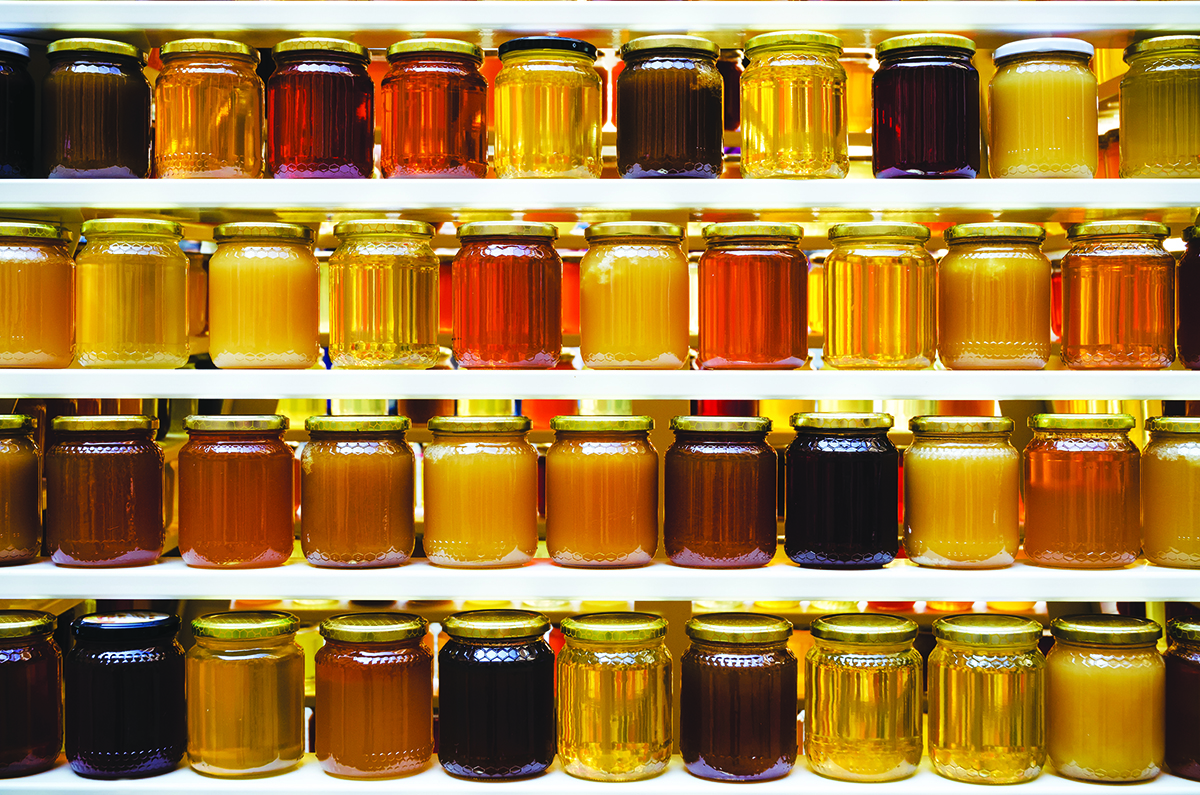Traditional marshmallows are loaded with unnatural ingredients and made with gelatin. The owners of Dandies Marshmallows recognized that these family-favorite treats – and a key component of bakery sweets favorites – desperately needed an ingredient-list makeover.
Dandies Marshmallows are made with no artificial flavors or colors, no corn syrup, no gelatin, and no gluten. Dandies’ plant-based marshmallows are Non-GMO Project Verified and kosher.
“Dandies Marshmallows have been used in hundreds of foodservice products over the years—from items in bakeries and restaurants to consumer products like chocolates,” explains the owners Ryan Howard and Dan Ziegler of Chicago Vegan Foods, based in Addison, Ill.
A family-owned company inspired by a passion for veganism, Chicago Vegan Foods was started in 2001 by longtime friends Howard and Ziegler. The company makes delicious, cruelty-free food products with a taste and texture similar to their animal-based counterparts.
In addition to Dandies, Chicago Vegan Foods’ lineup also includes the following foodservice products: Temptation Vegan Ice Cream, Temptation Vegan Soft Serve, and Teese Vegan Cheese.
Dandies came to life in 2008 when the company’s founder, Ryan Howard, wanted his son to try a marshmallow for the first time. His son, having been vegan since birth, had never enjoyed the classic campfire treat because gelatin is one of the main components in traditional marshmallows. Ryan, being a trained food process engineer by trade, put his mind to work and made some marshmallows in the test kitchen for his son to enjoy. The spark that lit the campfire was born.
Within a year, the company was putting the pieces together in a new processing plant, working tirelessly toward a product launch at Natural Products Expo West. By the show’s end, according to the company founders, Dandies had been placed in many Whole Foods Markets.
Dandies Marshmallows are indistinguishable from conventional marshmallows. They light and fluffy “marshies” are perfect for roasting over a campfire, putting in hot chocolate, cookies, crispy treats and more.
Emerging growth ahead

The vegan food industry has witnessed spectacular gains in the past few years, owing to increasing realization amongst consumers about the perceived ill-effects on human health as a result of excessive animal-based food products. The popularity of plant-based confectionery is an interesting trend in this regard.
Buoyed by these factors, a recently published market intelligence study, projects tht global vegan marshmallows market will grow at over 8% through 2028. These insights are based on a report on Vegan Marshmallows Market by Future Market Insights.
The Vegan Society estimates that demand for plant-based meat alternatives surged by nearly 1,000% across the United Kingdom in 2017, while 62% of the population purchased plant-based milk in 2020, and the movement is spreading to the United States. Such trends are generating credible expansion possibilities for prominent vegan marshmallow manufacturers.
The surging demand is also attributed to increasing preference for clean label and GMO-free foods. High preference for halal and kosher food items is prompting confectionery giants to offer vegan alternatives.
- Global vegan marshmallows market to exhibit value CAGR exceeding 8% through 2028.
- Premium vegan marshmallows to generate over half of the revenue share by the end of 2020.
- Vanilla and peppermint top-selling flavors.
- Health & wellness stores to register remarkable growth, expanding at a staggering 10.4% CAGR across the forecast period.
- North America to remain the dominant vegan marshmallows market, surpassing $100 million U.S. through 2020.
“Increasing demand for clean-label certifications, including halal and kosher, across prominent regions is motivating vegan food manufacturers to introduce plant-based marshmallows with unique flavor combinations, positively driving market growth,” the report states.
COVID-19 impact analysis
The novel coronavirus pandemic has ushered in a sea change in consumers’ dietary preferences, with sales of plant-based and vegan foodstuffs spiking across all continents. Growing apprehensions about possible infection contraction through zoonotic channels have compelled consumers to abandon meat consumption and choosing safer alternatives.
This precautionary behavior has also penetrated the marshmallows market, with prominent manufacturers augmenting production of different flavored vegan marshmallows. According to a Veganuary survey, 32% of participants revealed that they were consuming more vegan foods across the United States, United Kingdom, Latin America and Germany since the pandemic’s outbreak.
Hence, the prospects for vegan marshmallows have been broadening since the past several months. The market is expected to further aggrandize in the upcoming forecast period, with consumers expected to rely largely on clean-label and naturally derived foods way after the pandemic has subsided.
The global vegan marshmallows market is characterized by the presence of various prominent vegan product manufacturers, which are effectively leveraging the prevailing clean-label products consumption trends to flood regional markets with innovative flavor combinations.
The amazing world of honey varietals

Beyond the sweetness of marshmallows, there is another important ingredient to consider for a wide range of sweets: honey. The color and flavor of honeys differ depending on the nectar source (the blossoms) visited by the honeybees. In fact, there are more than 300 unique types of honey available in the United States, each originating from a different floral source, according to the National Honey Board.
Honey color ranges from nearly colorless to dark brown, and its flavor varies from delectably mild to distinctively bold, depending on where the honeybees buzzed. As a general rule, light-colored honey is milder in taste and dark-colored honey is stronger.
Honey is produced in every state, but depending on floral source location, certain types of honey are produced only in a few regions. Honey is also produced in most countries of the world.
Following is a look at some of the most common U.S. honey floral varieties. To learn more about available types of honey in your area, contact a local beekeeper, beekeeping association or honey packer. For help finding a honey packer or a specific floral source, contact the National Honey Board.
Honey varietals
What’s in honey? Carbohydrates, minerals, vitamins, prebiotics, acids, volatile organic compounds, bacteria, yeast.
However, it’s very simply made, by bees, not machines. Honey has thousands of varietals, all dependent on where the bee forage for nectar.
For example, orange blossom honey comes from Florida, which produces about 70% of the citrus cop in the United States, followed by California, then Texas and Arizona. Seldom are there enough bees to take advantage of all the nectar available in an orange grove.
Further, about 70,000 acres of buckwheat are grown annually in the U.S., and an acre of buckwheat can produce 150 pounds of honey. Conservationists plant it for wildlife food and cover. But its seeds can also be ground into flour, which makes it high in demand because it’s gluten-free.
- Alfalfa - Alfalfa honey, produced extensively throughout Canada and the United States from the purple blossoms, is light in color with a pleasingly mild flavor and aroma.
- Avocado - Avocado honey is gathered from California avocado blossoms. Avocado honey is dark in color, with a rich, buttery taste.
- Blueberry - Taken from the tiny white flowers of the blueberry bush, the nectar makes a honey which is typically light amber in color and with a full, well-rounded flavor. Blueberry honey is produced in New England and in Michigan.
- Buckwheat - Buckwheat honey is dark and full-bodied. It is produced in Minnesota, New York, Ohio, Pennsylvania and Wisconsin as well as in eastern Canada. Buckwheat honey has been found to contain more antioxidant compounds than some lighter honeys.
- Clover - Clover honey has a pleasing, mild taste. Clovers contribute more to honey production in the United States than any other group of plants. Red clover, Alsike clover and the white and yellow sweet clovers are most important for honey production. Depending on the location and type of source clover, clover honey varies in color from water white to light amber to amber.
- Eucalyptus - Eucalyptus honey comes from one of the larger plant genera, containing over 500 distinct species and many hybrids. As may be expected with a diverse group of plants, eucalyptus honey varies greatly in color and flavor but tends to be a stronger flavored honey with a slight medicinal scent. It is produced in California.
- Fireweed - Fireweed honey is light in color and comes from a perennial herb that creates wonderful bee pasture in the Northern and Pacific states and Canada. Fireweed grows in the open woods, reaching a height of three to five feet and spikes attractive pinkish flowers.
- Orange Blossom - Orange blossom honey, often a combination of citrus sources, is usually light in color and mild in flavor with a fresh scent and light citrus taste. Orange blossom honey is produced in Florida, Southern California and parts of Texas.
- Sage - Sage honey, primarily produced in California, is light in color, heavy bodied and has a mild but delightful flavor. It is extremely slow to granulate, making it a favorite among honey packers for blending with other honeys to slow down granulation.
- Tupelo - Tupelo honey is a premium honey produced in northwest Florida. It is heavy bodied and is usually light golden amber with a greenish cast and has a mild, distinctive taste. Because of the high fructose content in Tupelo honey, it granulates very slowly.
- Wildflower - Wildflower honey is often used to describe honey from miscellaneous and undefined flower sources.
- Honey blends - While different types of honey are available, most honey, especially honey supplied in bulk, is blended to create a unique and consistent taste and color.




